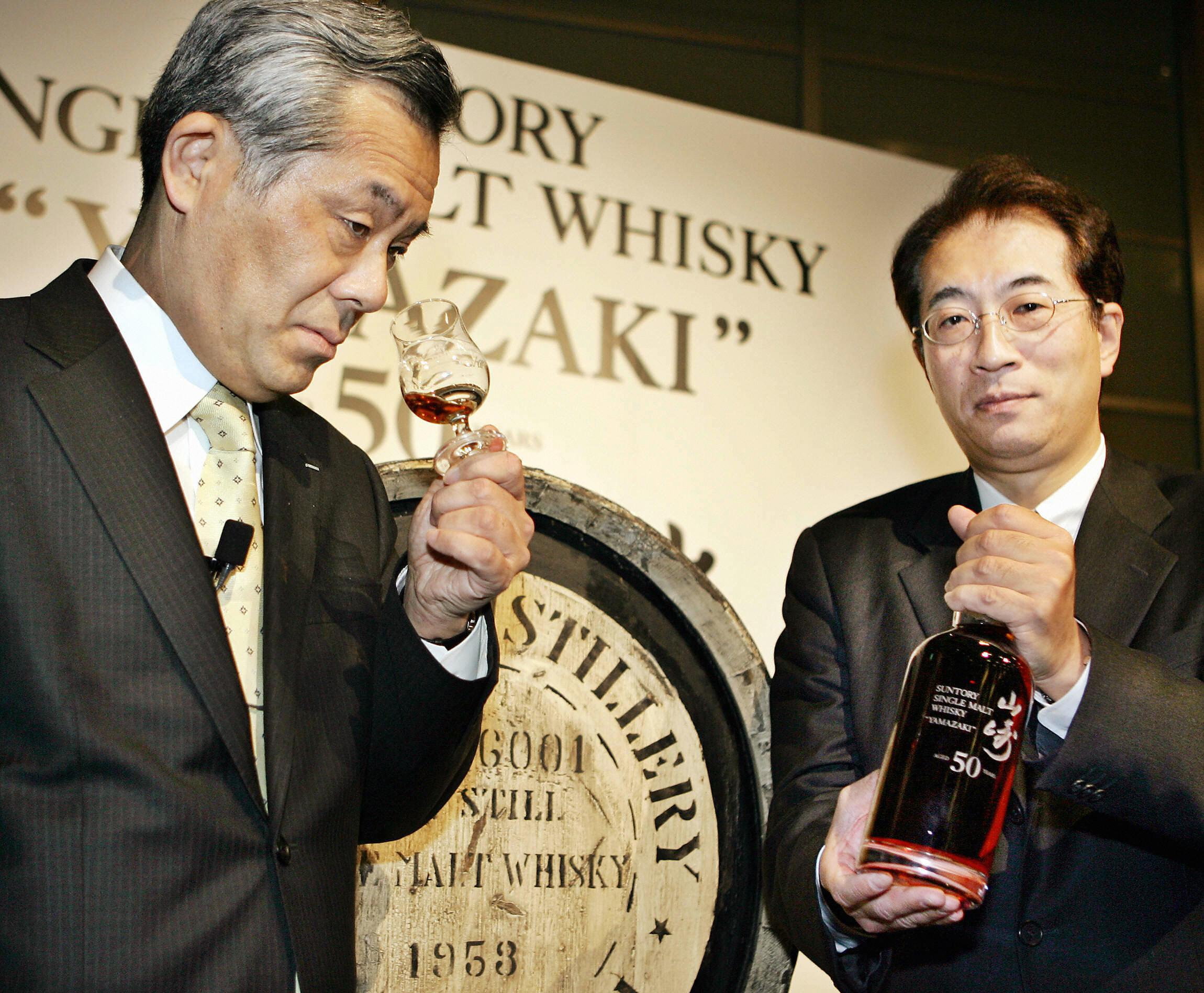As Max Fisher points out, a Japanese, as opposed to Chinese, company buying an iconic American brand is the sort of thing that would have dominated U.S. news coverage for days at a time about 20–25 years ago, though the news that Japanese whiskey giant Suntory is purchasing Jim Beam is still raising some eyebrows.
As Matthew Yglesias points out, the move seems aimed at meeting a growing global thirst for whiskey, particularly among affluent Asians. Singapore, for instance, is now the world’s largest consumer of Scotch, at a staggering 13 bottles per person per year. (I’m guessing visitors are buying a good portion of those bottles.) By some measures, India is now the world’s largest whiskey market overall, consuming 150 million 9-liter cases per year, though there’s some controversy over whether some of the most popular Indian brands actually qualify as whiskey.
Following the U.S.-Korea free-trade agreement last year, U.S. whiskey manufacturers have also been licking their lips at that country’s market. (Outside of Europe, Koreans are the world’s biggest drinkers. There’s a reason why a variety of soju is the most popular liquor brand in the world.) It’s not all about Asia, either. Jim Beam is the most popular individual spirit in Australia, and Germany now accounts for more than a quarter of its growth.
The other big story in the global whiskey industry this week is the British government’s new Spirit Drinks Verification Scheme, which aims to protect Scotch and other distinctively British alcohols from foreign imitators. (Several popular Indian whiskeys made from molasses spirit blended with imported Scotch may be the primary targets of the new initiative.)
Bourbon has some similar international protections. The North American Free Trade Agreement, for instance, includes language defining bourbon whiskey and Tennessee whiskey as “distinctive products of the United States” made in accordance with U.S. regulations. Suntory’s own products are more similar to Scotch, though naturally not labeled as such, and their move seems based on the reasonable premise that Asia’s increasingly large number of whiskey drinkers—not to mention the even larger number of soju and baiju drinkers—will be interested in what Kentucky and only Kentucky can offer, even if it’s by way of Tokyo.
